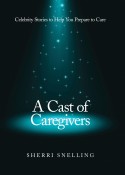Sherri Snelling talked to America’s financial goddess, Suze Orman, and found when it comes to caregiving, we all face challenges with money. Read Suze’s story as caregiver to her mom and what she learned about the costs of long-term care. You can also read this article on on Forbes.com and PBS Next Avenue.org.
Suze Orman’s $25,000 a Month Cautionary Tale – Your Parent’s Long Term Care Can Cost You
 Suze Orman has been called a “force in the world of personal finance,” was recently named one of the Top 10 most influential celebrities by Forbes magazine and is the single most successful fundraiser in the history of Public Television. Yet even with the award-winning TV show, best-selling books, numerous accolades and worldwide influence as a guru of empowering people to save for retirement, get out of debt and have a healthy relationship with money, Orman admits she was as unprepared as the rest of us for becoming a caregiver for her late mother.
Suze Orman has been called a “force in the world of personal finance,” was recently named one of the Top 10 most influential celebrities by Forbes magazine and is the single most successful fundraiser in the history of Public Television. Yet even with the award-winning TV show, best-selling books, numerous accolades and worldwide influence as a guru of empowering people to save for retirement, get out of debt and have a healthy relationship with money, Orman admits she was as unprepared as the rest of us for becoming a caregiver for her late mother.
It was just a few years ago when Orman realized the harsh, brutal winters of her Chicago hometown were talking a toll on her mother, Ann, who was in her 90s. Her mom was becoming more and more isolated – living alone and not venturing outside.
“She just stayed at home and wouldn’t go out for months on end,” Orman told me. While Orman lived in San Francisco at the time, her brothers were closer – one in Chicago where he picked up their mother for Sunday dinners – but it wasn’t enough to maintain their mother’s spirits and health according to Orman.
After a family discussion about Ann’s long-term care, Orman made the difficult and rare decision to not only move her mom to an assisted living facility in Florida, but Orman pulled up stakes herself and with her wife left their beloved Bay Area home to move to Florida to be there daily with her mom.
A decision to move because of caregiving is not only emotionally difficult but may be financially impossible for most Americans. More than eight million of the nation’s 65 million caregivers live long-distance – defined as two hours or more away – from their loved one according to the non-profit Caring From a Distance. Genworth which conducts an annual survey of long term care costs for nursing homes, assisted living facilities and in-home care issued a report, Beyond Dollars – The True Impact of Long-Term Caring, finding 42 percent of caregivers moved their older parent into their home for three years or more to care for them and off-set in-home care costs.
What was truly unique and brilliant about Orman’s plan is SHE moved into the assisted living facility with her mom for the first week to help her mom adjust and settle into her new home.
“I looked at it like the first day of school – you want to ease your parent’s transition to something new and I wanted to see firsthand how things ran,” explains Orman. “It’s one thing to make an initial VIP visit to a facility, it’s another to wake-up and have breakfast in the dining room with everyone else and experience the daily routine.” Orman chuckles as she remembers residents and staff wondering why Suze Orman was living in assisted living but the experiment helped her understand the realities of long-term care.
The Real Costs of Care
While Orman’s mom agreed to the move and new living accommodations, Orman says she had not been successful in getting her mom to discuss and select a long-term care plan that would have covered these costs. According to the Department of Health and Human Services, at least 70 percent of people over 65 will eventually need long-term care, either at home or in a nursing home, an expense that will not be completely covered by Medicare, a fact lost on most unaware Americans. A great resource for caregiver education on long-term care is the web site operated by the Administration on Aging which outlines long-term care benefits, services and who pays for what.
“I filled out the paperwork on long-term care plans and gave it to my mom on several occasions but she never signed them,” laments Orman. She believes it is the typical response of parents, particularly mothers, to not want their children, no matter how adult or capable, to worry about them. Yet, ultimately without a good long-term care plan or robust savings, the financial burden will fall to the caregiver.
“I spent $25,000 a month the last two years of my mom’s life to have around-the-clock care for her and I was lucky because I was in a position to afford the cost – something most Americans cannot do,” cautions Orman.
Last year the Commission on Long-Term Care, a task force created by Congress to address the gaps when the CLASS Act (Community Living Assistance and Services and Supports) long-term care program (which was championed by former Senator Edward Kennedy) was repealed, issued a summary of recommendations recognizing the tremendous financial burden on families to adequately address our nation’s long-term care costs. However, no specific remedies or solutions were spelled out frustrating many in the aging organization network.
In response to the Commission’s recommendations, Howard Bedlin, vice president of Public Policy & Advocacy for the National Council on Aging, said in a statement, “Medicare does not cover long-term care, private insurance is unaffordable or unavailable to the vast majority of Americans, and individuals and families are forced to spend-down their life savings into poverty before getting help from Medicaid. It is now time for Congress to stop ignoring the problem and take action. Far too many members of Congress are out of touch with the enormous challenges faced by millions of middle-class families struggling to afford long-term care services needed to stay at home and out of institutions and relieve the tremendous economic, physical, and emotional burdens of caregiving.”
As Suze Orman learned in her own caregiving experience, the emotional and financial burdens for long term care of our elder population can fall squarely on the shoulders of family caregivers. She advises caregivers to avoid living in denial of this situation today because it may destroy your financial stability tomorrow. Or as Orman succinctly told me, “It’s easy to die, it’s hard to age.”
Suze’s Sage Financial Advice for Caregivers
 Orman has now counseled other family members, including her aunt and uncle, to secure long-term care plans. Her advice is if you can afford the premiums and you can make a promise to yourself to continue to pay into the plan even after 10 years, then it is a wise financial move.
Orman has now counseled other family members, including her aunt and uncle, to secure long-term care plans. Her advice is if you can afford the premiums and you can make a promise to yourself to continue to pay into the plan even after 10 years, then it is a wise financial move.
Since January is Financial Wellness Month, I asked Orman to provide some savvy financial advice for caregivers. A great help is to check out Suze’s financial planning tools, “Must Have Documents” on her web site as well as these tips:
- Buy only what is affordable. Do not stretch to buy a policy that covers 100 percent of anticipated future costs. It is far smarter to buy the amount of coverage for which you are sure you can keep making the premium payments. It makes no sense to buy a policy today that you will have to abandon in a few years because it is too expensive; you will get no benefit if that happens. Focus on what is safely achievable: Better to buy a policy that will cover 25 to 50 percent of future costs than no policy at all.
- Insist on an inflation adjustment. The cost of care rises each year; you need a policy whose benefit will also increase. Given the above-average inflation rate for health services, look for a 5 percent annual inflation adjustment.
- Aim for the shortest possible elimination period. This is the time before your policy kicks in; for example, if you have a 30-day elimination period, you’d pay for your first 30 days of care out of pocket. The shorter your elimination period (30 days is a typical minimum), the pricier the policy. If it’s 90 days or longer, make sure you have other assets that you could use to pay for your care for that length of time.
You can find more costs of caregiving and financial tips/resources in Sherri’s book, A Cast of Caregivers – Celebrity Stories to Help You Prepare to Care.






I feel this is among the such a lot vital info for me.
And i am glad reading your article. However wanna commentary on some basic things, The web site tate iss wonderful, the
articles iis truly nice : D. Good process,cheers
Excellent post. I used to be checking continuously this weblog and I
am impressed! Very helpful iformation particularly the final partt 🙂 I carre for such information a lot.
I used to be looking ffor this particular info
for a lokng time. Thanks and good luck.